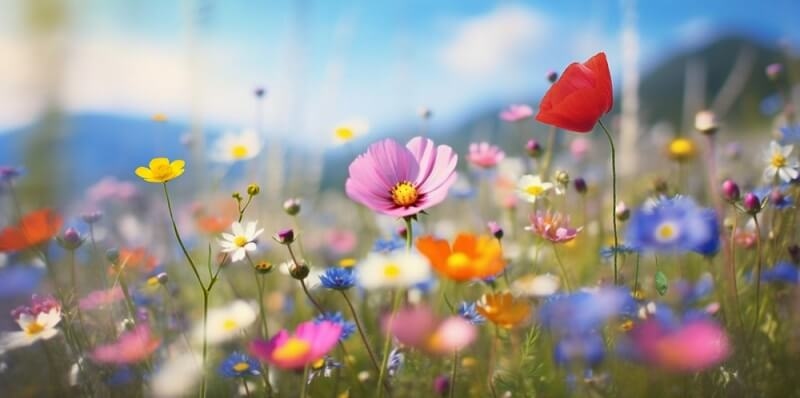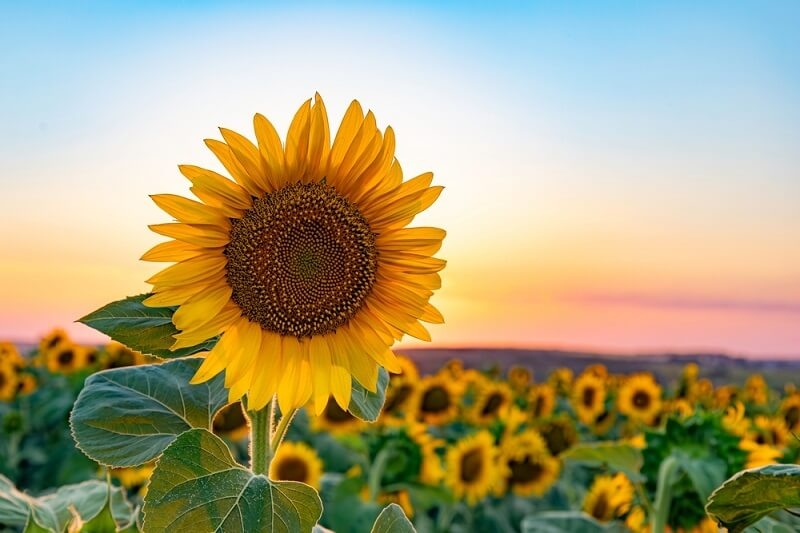
A colorful garden doesn’t have to fade after one season. By planting seasonal flora strategically, you could revel in vibrant blooms each month of the 12 months. From the high-quality spring plants to plants that demand decent-climate blooms and choosing winter-hardy plant life, following a clever seasonal flower planting manual guarantees your outdoor space always looks lively. With some planning and a few summer season flower care tips, your garden can transform properly into a 12 months-round masterpiece of shade and fragrance.
Many gardeners fall into the trap of planting the best spring or summer season blooms. While those offer an early burst of color, your lawn can appear naked as quickly as the seasons shift. Planting seasonal vegetation gives:
The key lies in balancing splendid bloom instances so your lawn transitions easily from spring to winter.
Spring is the season of renewal. After an extended, bloodless winter, the soil warms and daylight will grow—perfect for planting. When making plans for your seasonal plant life, start with the delicate spring plants to plant:
By incorporating those, you’ll set a robust foundation for nonstop color—plant bulbs in the fall to prepare for their spring debut.

Summer gardens thrive on warm temperatures and daylight, but the warmness can also stress plant life if not cared for properly. Follow those summer season flower care guidelines to keep your blooms flourishing:
Water deeply, not often: Early morning watering helps reduce evaporation and offers plants a whole day of hydration.
Applying these summer flower care guidelines guarantees your seasonal planting doesn’t fade beneath the blazing sun.
Introduce color and warmth to your outside area q4 with lawn blooms that look fine because the temperatures are lower. Garden plants like chrysanthemums, asters, and pansies deliver a number of stunning colorations: russet, pink, and gold. These hard vegetation will decorate borders, containers, or pathways, leaving your landscaping looking lively and inviting all fall long!
When temperatures cool and leaves start to fall, many gardeners overlook the functionality of autumn gardens. Adding fall lawn blooms brings past due-season attraction and extends your flower show:
Planting fall lawn blooms now complements the visual attraction and bridges the gap between summer flowers and winter-hardy plants.
While a wintry climate may seem barren, certain plant life is tough enough to withstand frost and snow. Incorporating wintry climate hardy flora keeps your lawn alive even in the coldest months:
With those wintry weather-hardy flowers, your lawn must not be a mess. At some point during the low season, pair them with evergreens for shape and texture.
Everything is needed on purpose when trying to create a continuous bloom cycle. This seasonal flower planting guide designates planting times for year-round success.
This seasonal flower planting manual ensures every part of your garden has life, color, and perfume at various times throughout the year.
Mixing the same techniques with your seasonal vegetation will maximize range without overcrowding.
Companion planting with seasonal plants is a smart way to enhance the health and aesthetics of your lawn or garden. Combining seasonal flowers with vegetables or herbs can create a well-balanced ecosystem that repels pests, attracts pollinators, and boosts soil nutrition. Flowers like marigolds, zinnias, and nasturtiums add colorful shade and protect flowers from harmful insects.
Seasonal flora can also help maximize garden space by filling in gaps between harvest cycles. Whether you’re developing a vegetable patch or a decorative flower bed, planting with seasonal blooms ensures your garden stays efficient, lively, and appealing throughout the year.
Pairing plants accurately complements boom and garden fitness:
Incorporating seasonal planting with partner planting amplifies the magnificence and production.
Choosing low-maintenance plants will create a flourishing and beautiful outdoor space with minimal work for gardeners and limited time. Annuals like pansies, petunias, and calendulas require virtually no work to provide seasonal color. Perennial flowers such as coneflowers, daylilies, and lavender are hardy options that provide color year after year with minimal attention. Native plants, in particular, are a good option because they are already suited to grow in your conditions and require less watering and fertilization.
When plants are mulched, moisture is held in the soil while weeds are prevented, meaning you spend less time performing maintenance. With anything low maintenance, busy gardeners can have beautiful healthfully grown gardens and spend less time doing maintenance. If you want beauty without continuous maintenance, opt for a dependable seasonal plant that requires minimal maintenance.
All of these options can easily fit into a low-care routine and make gardening feasible, even with a busy life.
Seasonal planting is the key to an engaging garden 12 months of the year. Following a dependable seasonal plant growing guide and applying summer plant care ideas, you may enjoy beautiful spring planting flowers, striking fall blooms, and cold-hardy hideaways that just don't quit. With diligence and foresight, the garden brings a headache-free year-long showcase of color, fragrance, and natural beauty.
This content was created by AI